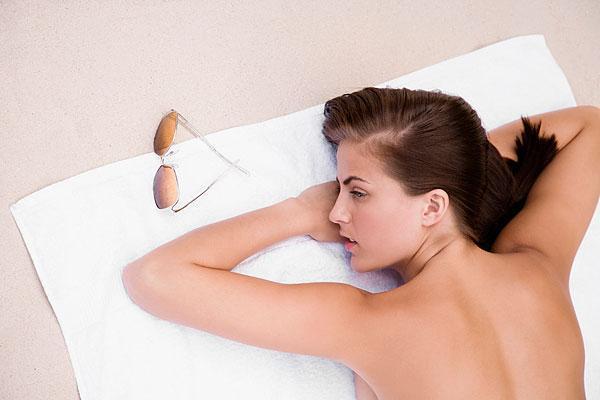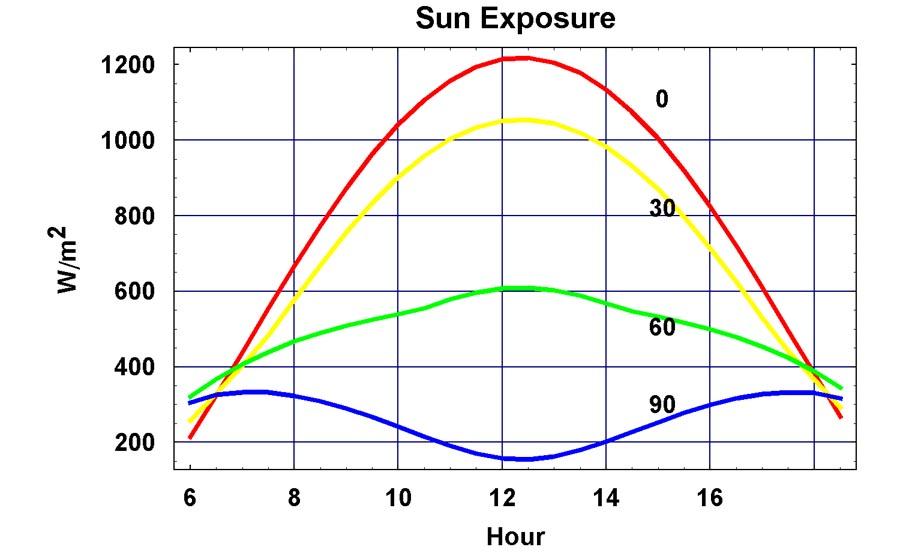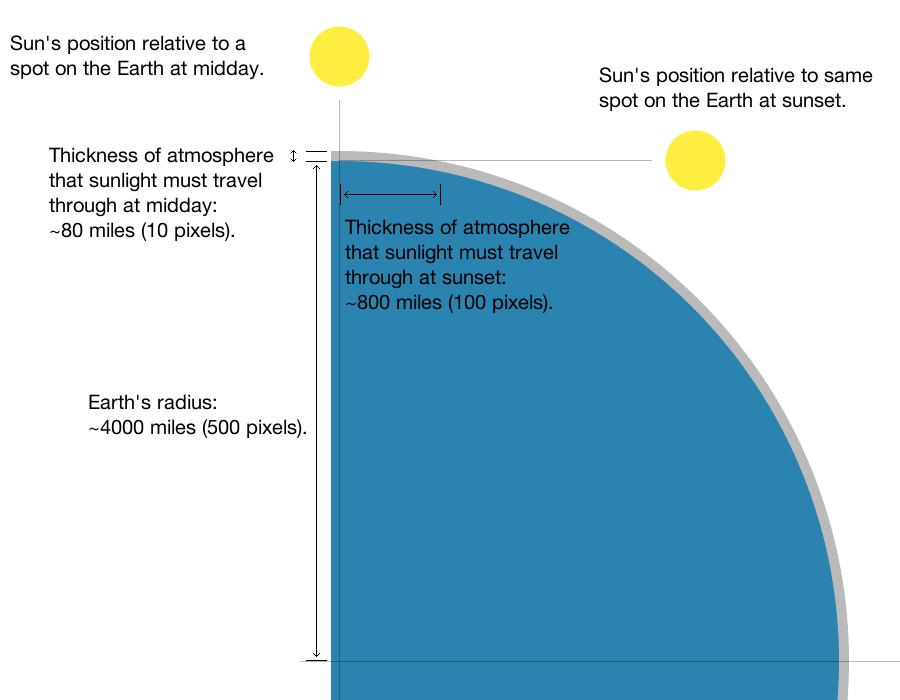 By Jane Barthelemy.
By Jane Barthelemy.
Is Sunlight Dangerous?
Over the past 4 decades, dermatologists and doctors say you should never be exposed to direct sunlight because it will damage your skin and cause skin cancer.
After numerous basal cell spots, I’m also wary of the sun.
As I child I basked in the sun all summer long without sunscreen or a hat. I got lots of sunburns, peeled and went out again. Now I know better. Countless basal cell cancer spots on my face and chest have taught me to do everything I can to avoid a recurrence.
Surprising research: Sun Exposure Leads to Lower Overall Death Rate.
Recent scientific studies repeatedly show that women who get regular sun exposure have a lower death rate than those who avoid sun, in spite of the fact that they have a slightly higher risk of melanoma. This may be due to their increased vitamin D levels. Clearly, sunburn leads to skin damage. However studies show that sensible sun exposure at non-peak hours can be extremely beneficial. Indeed it is necessary for your health.
Benefits of Sun Exposure
Sadly, studies that link sun exposure to skin cancer tend to disregard the benefits of sunshine on the human body. What are the benefits of sunlight? Professor Michael Holick, of Boston University School of Medicine and author of the book “The UV Advantage” says:
“We get about 90 – 95 % of our vitamin D from the sun. Sunshine is essential for absorbing calcium, keeping bones healthy, and for protecting against chronic diseases in later life such as osteoporosis, Type 2 diabetes, MS, and many common cancers.”
He advises that we should go out in the sun without sunblock for 5 to 15 minutes a day to boost our vitamin D levels.
Lack of Sunlight and Vitamin D is a global epidemic.
Low Vitamin D levels have been linked to chronic illnesses such as cardiovascular disease and depression. Tuberculosis, which kills 4,100 people per DAY around the globe, has been directly linked to Vitamin D deficiency!
Researchers estimate that 50 % of the general US population deficient in vitamin D deficiency. Signs you may have a vitamin D deficiency include age over 50, having darker skin, obesity, achy bones, feeling blue, sweaty head, and gut trouble. Increased levels of sunlight or vitamin D3 could prevent chronic diseases that take nearly one million lives in the world each year.
Ironically, recent research shows that vitamin D also improves survival outcomes for melanoma patients. Vitamin D is also important for cognitive health, immune function, healthy pregnancy and infant development, and strong, healthy bones, just to name a few. Doctors can often be torn on recommending time in the sun, when both too much and too little sunlight can have consequences.
A recent news report noted:
“15 to 20 minutes in sunlight a day helps your body produce the vitamin D it needs to absorb calcium, promote bone growth and keep the heart healthy. But sunscreen protection against skin cancer reduces the body’s ability to manufacture vitamin D.”
Swedish Study Says: “Sunlight Lowers Overall Risk of Death”
A recent study drives home these benefits was done in Sweden. More than 25,500 Swedish women between the ages of 25 and 64 were followed for 20 years. Detailed information about sun exposure habits and confounding factors were obtained and analyzed in a “competing risk” scenario.
Overall, women who got regular sun exposure had a lower all-cause mortality risk—likely due to their increased vitamin D levels. Women with active sun exposure habits ended up having a lower risk of cardiovascular disease and non-cancer death compared to those who avoided the sun. Of particular note:
“Nonsmokers who avoided sun exposure had a life expectancy similar to smokers in the highest sun exposure group, indicating that avoidance of sun exposure is a risk factor for death of a similar magnitude as smoking. Compared to the highest sun exposure group, life expectancy of sun-avoiders was reduced by 0.6–2.1 years.”
Skin Damage Depends on Sun Intensity and Time of Day.
The peak of sunshine around 12:00 noon might give you a serious burn. On the other hand in the morning or evening, the sun’s rays are at a much greater angle. Sunlight is more filtered through thousands of miles of atmosphere in the morning and evening, so these rays are less likely to cause damage.
 Risk of sunburn and skin cancer is highest at 12:00 noon.
Risk of sunburn and skin cancer is highest at 12:00 noon.
Lower Latitudes Increase Intensity of Rays
Are you in Sao Paolo or Toronto? Near the equator, the sun’s rays are more direct, and you’re more likely to cause skin damage. However in Toronto your risk is less, because the sun’s rays are hitting you from an angle, being filtered by atmosphere.

Risk of sunburn and skin cancer is highest when the sun is directly overhead, such as at the equator at 12:00 noon.
General Guidelines for Sensible Sun Exposure – For USA or similar latitudes:

What are the Benefits of Sunlight?
Sunlight Kills Depression – Getting out in the sun dissolves depression by boosting levels of serotonin, especially when combined with exercise
Sunlight Prevents Diabetes, which is often linked to low Vitamin D. A Finnish study found that children given Vitamin D had an 80% lower risk of diabetes in later life.
Sun Heals SAD, Seasonal Affective Disorder – Real sunlight beats a light box, and walking outside at sensible hours does wonders for your health.
Sun Exposure Reduces Risk of Heart Disease and High Blood Pressure – The British Medical Journal found that the amount of sunshine you get, and even the place you live, have a big effect on your risk of cardiovascular diseases and high cholesterol. For every one skin cancer death in northern Europe, between 60 and 100 people die from stroke or heart disease, related to hypertension!
Sunlight may lower your chance of getting of MS – People in sunnier countries have a much lower incidence of MS.
Sunlight reduces the risk of cancers – Even though sun increases the risk of skin cancer, overall sensible exposure to sun can significantly reduce your chances of dying from breast or colon cancer, says a study by the US National Cancer Institute.
Improves Crohn’s Disease and IBS, Irritable Bowel Syndrome – Both of these are linked to low Vitamin D levels.
Should You Supplement with Vitamin D?
Yes, if you live in a low-sun area of the world or can’t go outside, taking oral vitamin D is important. But many experts say this is clearly an inferior alternative. While it will improve your vitamin D status, you’ll miss all the other many benefits sunlight offers production.
Researcher Richard Weller says:
“We suspect that the benefits to heart health of sunlight will outweigh the risk of skin cancer. The work we have done provides a mechanism that might account for this, and also explains why dietary vitamin D supplements alone will not be able to compensate for lack of sunlight.”
Sunlight – A Healthy Alternative to Coffee?
My personal experience is that sunlight is a beautiful way to enliven your body. Whether taking a walk, or doing yoga in the buff, I notice a definite sense of uplift and vitalization. Just 10 minutes total of full body sun bathing beats a cup of coffee any day. I do 5 minutes face up, 5 minutes face down, and shift my body lengthwise every few minutes so I’m getting all sides. Your skin sensors will love it!
Sunscreen: More Harm than Good?
I do not use sunscreen. Instead I wear long sleeves, high collar, and a big hat! The Environmental Working Group’s (EWG) guide to safe sunscreens includes their review of over 2000 sunscreens and over 257 brands. They found more than 75% of the sunscreens contained toxic chemicals that can increase your risk of cancer and other health issues. The EWG says:
“Our review…shows that some sunscreen ingredients absorb into the blood, and some have toxic effects. Some release skin-damaging free radicals in sunlight, some act like estrogen and disrupt hormones, and several can cause allergic reactions and skin irritation. The FDA has not established rigorous safety standards for sunscreen ingredients.”
Sunglasses – Do you really need them?
On an average sunny day, sunglasses do your eyes more harm than good. Sunglasses block potentially beneficial wavelengths of light from reaching your eyes. There are over1,500 wavelengths of light that you need to nourish your eyes. So I avoid using sunglasses, because I believe our eyes need a full spectrum of light to function optimally, and sunglasses block out some essential waves of the light spectrum.
Take off your sunglasses too, honey. The best way to get exposure to healthy full-spectrum light is to do it the way nature intended, by going out in the sun with your bare skin – and ‘bare’ eyes, on a regular basis.
Your Eyes Need Exposure to Bright Light During the Day
Sunglasses are useful when you’re skiing, or driving into the direct sun. However your eyes need to be used and moved in normal light, allowing the pupils to expand and dilate with changing intensities of light. Be careful about over-shielding your eyes from sunlight, because the full-spectrum light entering your eyes, goes into your brain hypothalamus where it benefits your whole body. Your hypothalamus is an essential endocrine glad that controls body temperature, hunger, thirst, water balance and blood pressure. Additionally, it controls your master gland, the pituitary, which secretes many essential hormones, including those that influence mood. Your ‘body clock’ is housed in the hypothalamus, controlling circadian rhythm, that all-important awareness of time. Full-spectrum light is a very effective therapy often used for treating depression, inflammation, and more.
Anything that disrupts these essential biorhythms, such as inadequate sunlight to your body (including your eyes), has a far-reaching impact on your health. So take off your clothes and your sunglasses. Enjoy sensible sun by the above guidelines, and feel the difference in your health!
 “You’ve been fooling around with that Full Body Sunbathing, haven’t you?”
“You’ve been fooling around with that Full Body Sunbathing, haven’t you?”



